Seeing in the Dark
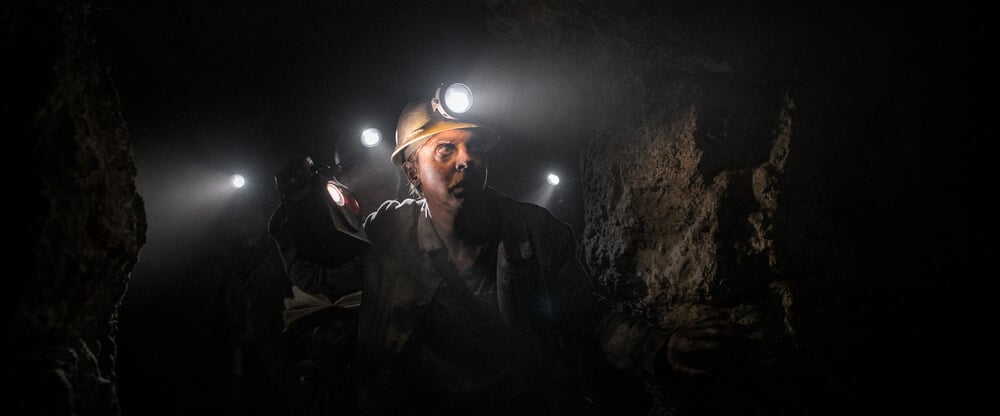
Set in 1950s France, The Deep Dark (Gueules noires) follows a group of coal miners who are commissioned to escort a professor through dangerous depths to retrieve measurements. After becoming trapped by a series of landslides, the unwitting crew soon discovers the terrifying reason why no one’s traversed these caves in a hundred years.
Written and directed by Mathieu Turi, The Deep Dark bears a neo-noir quality skillfully crafted by cinematographer Alain Duplantier, who shot the feature with Primo 70 optics. Here, the cinematographer shines a light on how he and his collaborators captured a story that takes place almost entirely in the dark.
Panavision: How did you become involved in The Deep Dark?
Alain Duplantier: I had already collaborated with Mathieu Turi for his film Meander. Preparation is an important creative stage for Mathieu. He nourishes and enriches his film very early on. He questions the narrative, the strength of the characters, the atmospheres, etc. And of course all these questions inevitably invite a questioning of the image. It is therefore a collaboration which opens quite unusual and particularly interesting fields. Mathieu and I thrive on this approach. The staging draws on the photography, and the photography builds on the narrative and emotional issues of the film. Also, my very expressionistic personal photographic work provided a photographic intention that Mathieu really liked.
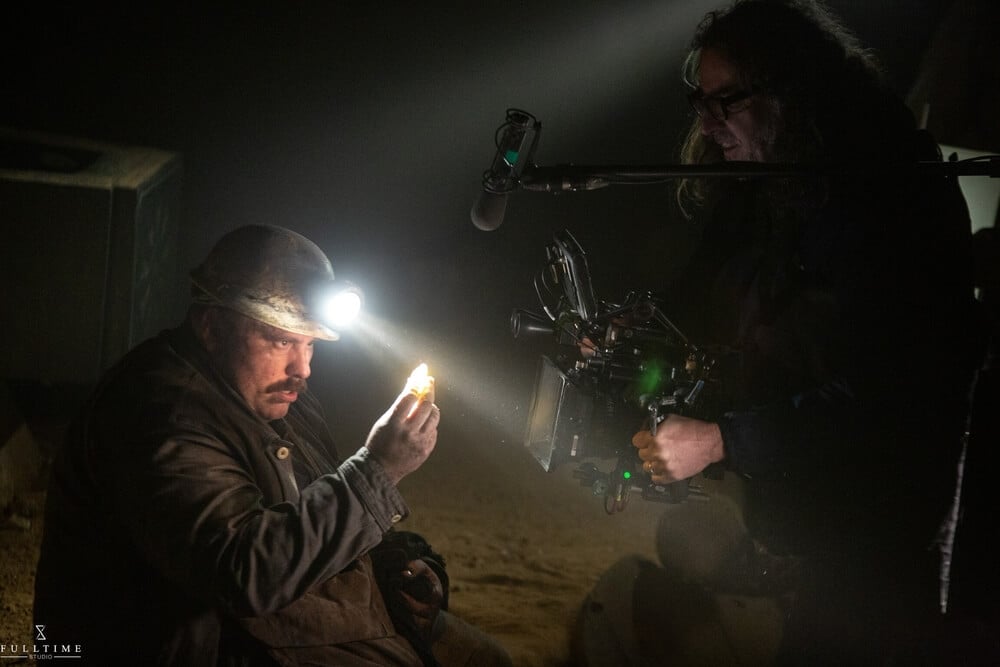
How would you describe the look of the project?
Duplantier: The Deep Dark takes place over two periods. Mathieu and I wanted each of these periods to be clearly identifiable.
The first was in 1850. The working conditions for miners then were terrible — humidity, dust, darkness, long working days punctuated by explosions, landslides and floods. We wanted to recreate the harshness of these conditions and get as close as possible to what these miners really experienced. The multiple illustrations that we consulted, the testimonials, the site visits, etc. gradually guided our choices. Using the kerosene lamps of the time for our lighting quickly became obvious, but this strong choice did not allow us to convey the full depth of what we had before our eyes. We had to find a way to restore the detail of a completely black universe inhabited by men covered in black. We wet the walls, brought shine, made the skins shine, greased the clothes, and finally used smoke to find depth. We are all very proud of this part, as much for the visual result as for the collective commitment of everyone.
The second part takes place in 1950. The work of the miners is quite similar to that of 1850, but electricity brings a radical change. The coal galleries are then lit by lamps placed on the ceiling every 5 meters, and the miners use headlamps integrated into the helmets and powered by batteries placed in remote boxes, attached to the belt. I suggested to Mathieu that we could use these headlamps as main sources. This was the opportunity to establish a natural and obvious evolution while preserving, once again, the reality of this second period. It was also important that we fully adhered to this choice and understood the issues, because Mathieu’s staging would have to integrate the fact that the actors themselves were going to be the carriers of our light sources.
Now we had to find the ideal lamp. With Franck Barrault, my gaffer, we chose caving lamps equipped with two LEDs, one with a wide flood beam and the other a concentrated spot beam. It was necessary to be able to control them remotely to be able to maintain control of the density and mixing of the two beams. Franck collaborated with the company Art Tech Design to equip these lamps with drivers compatible with LED diodes and to design the boxes that the actors would wear on their belts which contained the batteries, the driver and the CRMX device, allowing Franck to manage the lights ‘live’ for each actor. The concept worked very well and the actors played the game admirably, being aware of their additional responsibility. The visual effect produced by the headlamps in the coal mine mixed with the ambient lights works wonderfully.
Much of the action in this second period also takes place in a limestone mine with white rock walls. The mere effect of the headlamps is striking in both realism and mystery. The ‘choreography’ of the light beams in the darkness, the cast shadows running on the walls almost on its own construct the oppressive atmosphere of this moment in the film. The intensity of the actors could then be fully expressed. Thus, the anxiety, claustrophobia and fear that we experience in the film found their source as much in the action, the interpretation, as the atmosphere that we had imagined.
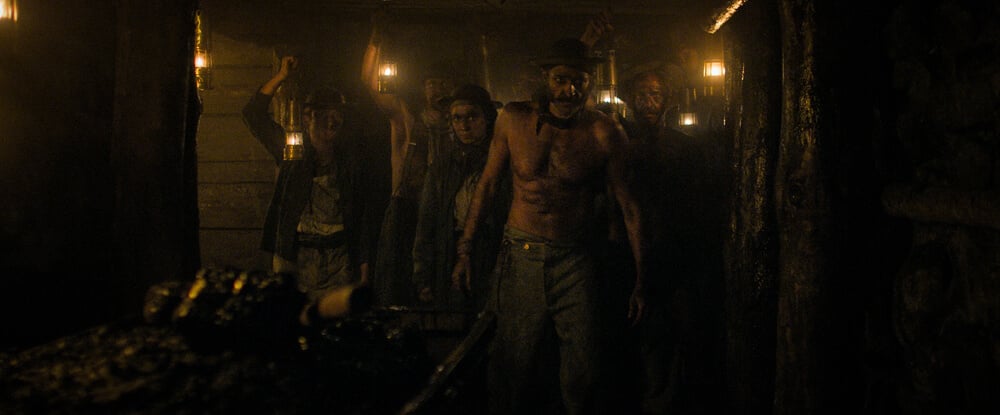
What brought you to Panavision for this project, and what attracted you to the specific lenses you chose, the Primo 70s?
Duplantier: I have collaborated with Panavision on numerous occasions, and each time I’ve been able to count on the wise expertise of the technical staff. Of course they know their cameras and their lenses, but above all they understand the emotional issues of the image and how one lens more than another is able to respond to them.
For The Deep Dark, we had to find optics capable of handling extreme highlights without generating flare, or flaring in a very measured way. We tested several series of optics, and quite quickly the Primo 70s satisfied us completely. They remained efficient in all the extreme situations we faced. Very few flares, beautiful substance in the skins, depths in the blacks, very beautiful bokeh, and little chromatic aberration or distortion.
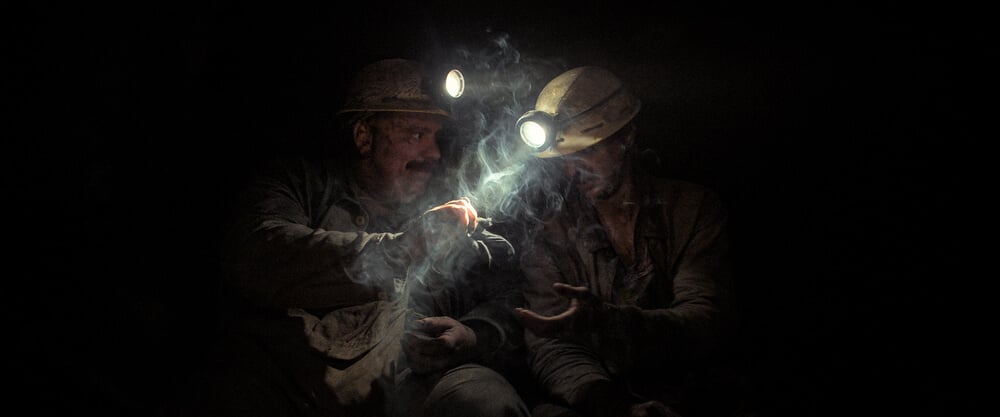
What originally inspired you to become a cinematographer?
Duplantier: I have always liked to bring to life my perspective on things, people, situations. I started with film photography, and the play of distance and proximity has always fascinated me, being both inside and outside.
Today, in the age of social networks, where every moment, every person is photographed and put online, and where many things are similar, it becomes even more clear to me that sharpening my own point of view is an essential element of my work. I fundamentally believe that ‘point of view’ is the very essence of my job. A film must meet and confront the unique perspective of those who imagine it and offer a unique experience, which the work of the cinematographer helps to construct.
What keeps you inspired in your work today?
Duplantier: The script and the words of the director.
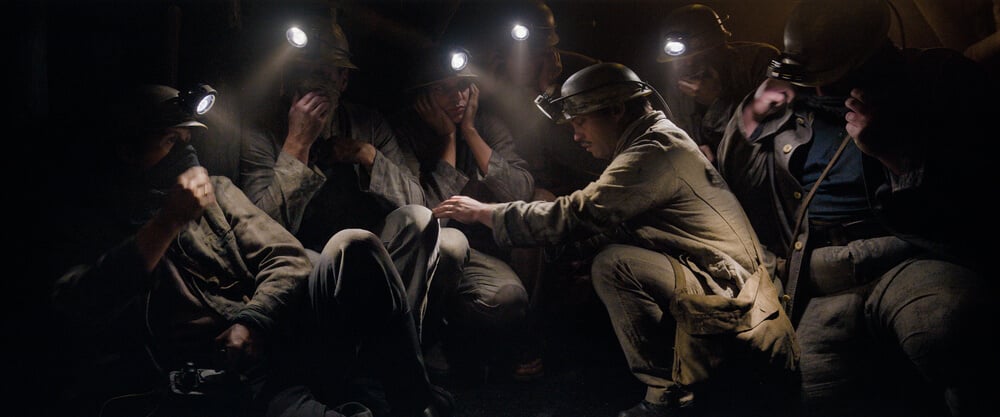
Images courtesy of Full Time Studio.
